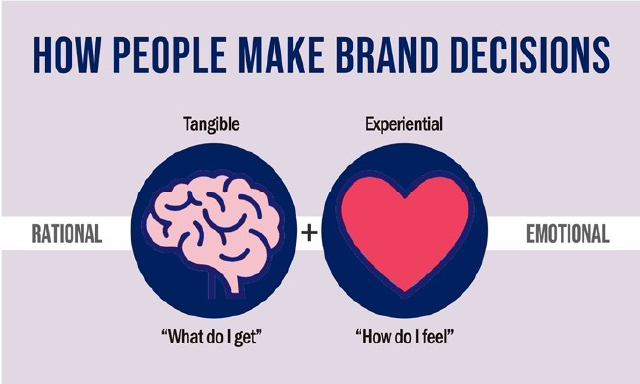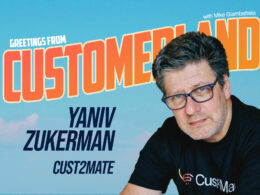The Cost of Intransigence and What to Do About It
“Adapt or perish, now as ever, is nature’s inexorable imperative.”
H.G. Wells
Loyalty programs have become a tool many brands cannot live without. For members, however, current programs are getting harder to live with, as a failure to evolve and adapt to today’s market is undermining program efficacy, frustrating members, and doing little to build loyalty.
by Mike Ribero
For those who belong to a loyalty program, this should not come as a surprise. Programs have changed very little in the 40 years since first introduced. The few changes made were mostly reactive in an effort to manage growth, adding complexity that made it harder for members to obtain value. As a result, costs skyrocketed while member satisfaction plummeted. Today US companies spend a staggering $2 billion annually on loyalty programs, yet according to recent studies, member satisfaction has fallen below 50% across every sector. Social media paints an even bleaker picture, with negative program sentiment at an alarming 89%.
The inability to evolve and adapt puts the future of loyalty programs at risk. Because they are relationship-based, programs must take the lead in reshaping the customer relationship before any evolutionary process can begin. Addressing the triumvirate of customer-centric issues that follow will help jumpstart the process:
Neglecting customer relationships
Program members have had to endure an inflexible legacy structure that essentially subordinates them to brands that rarely, if ever, reciprocate their commitment. The original one-size-fits-all approach makes it impossible to meet today’s increasingly diverse member needs. Obtaining value has also become a challenge as earning is almost always limited to purchases, ignoring the many other ways members can add value. However, nothing has eroded customer relationships more than the automated attendants, chatbots, and similar technology that have replaced program personnel. The resulting loss of human contact has made it virtually impossible to forge the emotional bonds necessary for sustained brand loyalty.
Instead of perpetuating the problem, loyalty programs can take the first step in reimagining the customer relationship by moving from membership to partnership. Today’s more empowered and informed customer expects a more equitable relationship, which a partnership offers. Partnerships level the playing field, align interests, and are inherently reciprocal, giving all parties a stake in brand growth. Together with the incentives programs offer, which can ensure members receive value for the value they add, a partnership provides the ideal basis for a productive and sustainable customer relationship. It can also be a catalyst for increased communication and collaboration needed to ensure optimal program evolution.
Underutilizing customer data
Originally created as a relationship-based and data-driven initiative, loyalty programs have failed to deliver on either. Yet both are key to building loyalty, but due to their symbiotic nature, one cannot be optimized without the other, although a relationship is required for data to have value. This is why the customer relationship was addressed first and why a partnership provides the ideal foundation for addressing other issues. A partnership not only builds trust, which encourages customers to share data, but also ensures customers receive value in return. Given the increasing demand for personalization and a privacy environment that makes compliant data harder to obtain, reliable compliant data has never been more important to a brand.
Again, loyalty programs can make a difference, as data sharing, like making a purchase, is a behavior programs can incentivize. Incentives can be offered to those that share personal data while a partnership offers more control over how and with whom data is shared. This empowers customers and also benefits brands, as data shared directly ensures it is timely, secure, and compliant. Further, data shared directly can extend beyond the brand to provide insights not previously accessible, facilitating a level of personalization not previously possible. Better personalization can further strengthen the relationship in ways that encourages additional data sharing. The resulting reinforcing cycle can fuel consistent and continuous improvement that is critical to building and sustaining loyalty today.
Forgetting the fundamentals
Once a relationship was established with data to drive it, programs worked to create a significant opportunity cost for non-exclusive use/purchase of a brand to maximize retention. For maximum impact, that “cost” was comprised of both rational and emotional levers, which programs delivered via a combination of rewards and recognition. As market pressure increased, programs began favoring the immediate impact rewards offered, with recognition all but forgotten. The resulting imbalance has affected performance and caused many programs to devolve into one dimensional reward programs, or worse, discount programs in disguise.

Loyalty requires both rational and emotional “alignment,” which represents another opportunity for programs to restore the right balance of rewards and recognition. Together they can help answer the two questions most ask when making a brand decision, “what do I get” from the brand, which is focused on a customer’s rational needs, and “how do I feel” about the brand (or “how does the brand make me feel”), focusing on their emotional needs. Rational needs are typically tangible or functional attributes with examples that include price, selection, convenience, warranty, and similar. Conversely, emotional needs are intangible and often experiential. Examples include trust/reputation, personalization, appreciation, special treatment, and exclusives, traits far more difficult for competitors to match.
Rewards and recognition work together to bolster rational or emotional satisfaction and can serve as a tiebreaker when choosing between two comparable brands. Their complementary nature requires balance for maximum effectiveness. Reprioritizing recognition can also help rebuild the emotional connection lost to technology, restoring the rational and emotional bonds critical to brand loyalty.
By addressing these three issues loyalty programs can take the lead in reshaping the relationship to better meet the needs of today’s more informed, empowered, and diverse customers. Addressing these issues will also improve program performance and pave the way for badly needed change. Partnerships are the key, as they foster communication and cooperation that builds trust. Partnerships are also the basis for mutually beneficial working relationships that can yield the insights needed to get to know customers as individual people. This will help drive more active individual engagement, elevating the standard for next generation loyalty from advocacy to brand activism. Customer actions always speak louder than words.
Keep an eye out in early January for a blueprint outlining the 10 critical changes that will define next generation loyalty or brand activism.

Mike Ribero is CEO of Reach. He is one of the original architects of modern-day loyalty programs having built the Hilton Honors program, and previously, co-led the team that created Continental’s OnePass program, now part of United’s MileagePlus program. Learn more about Reach’s innovative new partnership platform that benefits both customers and brands here.
Photo by Fernando Jorge on Unsplash













